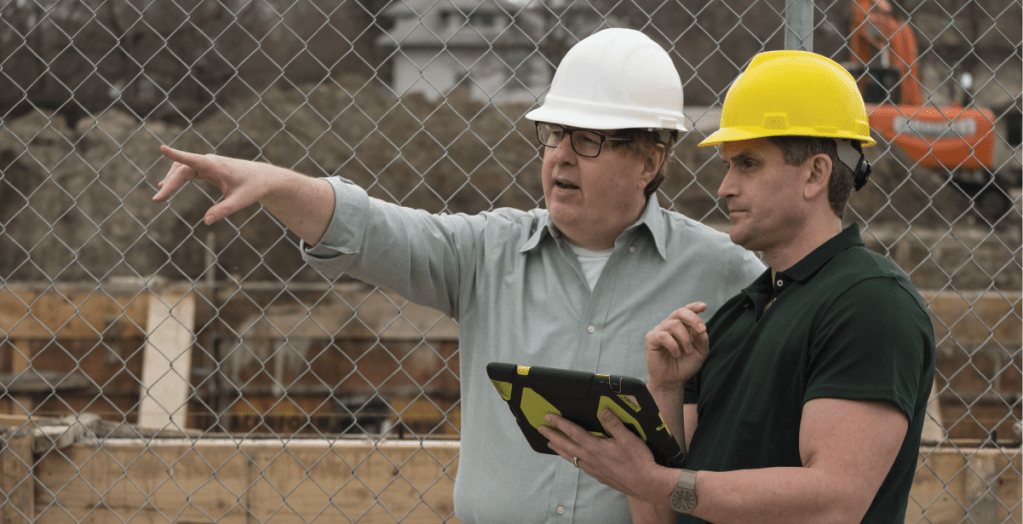There are a variety of insurance coverages that a contractor will need on a project, such as general liability or builder’s risk insurance. Workers’ compensation insurance is often regarded as the most expensive of the many coverages needed on a construction project. Many states require contractors to have some form of workers’ compensation coverage on their projects in order to protect employees from potential work-related injuries.
The cost of workers’ compensation insurance differs for each contractor, based on the level of risk that the insurance firms calculate. This calculation is known as the EMR, or experience modification rating, and it becomes the measuring stick when insurance firms look to provide coverage to a contractor.

What is an Experience Modification Rating (EMR)?
EMR, or experience modification rating is a calculation used by insurance firms to price the cost of workers’ compensation premiums. The rating reflects a variety lagging indicators, such as injury costs or claim history, and offers a prediction of future risk.
EMR is also referred to as a Mod-Factor or Mod-Rating, so depending on who you are dealing with these terms may be used interchangeably.
What is a good EMR?
The average EMR is 1.0, which means that the contractor is found to be no more or less risky than majority of other contractors.
Typically, a rating under 1.0 is considered good, or relatively safe. If your rating is above 1.0 it is considered bad, or riskier.
How to Calculate Your Experience Modification Rating:
EMR is based on real information and actual insurance claim history. Claims that have been reported to the NCCI (National Council on Compensation Insurance) in the past 5 years are considered, however insurance agencies will only examine the past 3 years of claims.
If you are a contractor that is a newer business with less than 3 years of claims to examine, your EMR is typically calculated at 1.0.
THE EXPERIENCE MODIFICATION FORMULA
FACTORS
A – Payroll (12 months of real wages only)
B – Job Classification Rate (Found at NCCI)
C – Discounts, Penalties & Assessments (Decided at the final stage for your premium)
D – Actual Loss (Total Actual Incurred Losses)
E – Actual Primary Loss (Actual Loss below the amount of $17,000)
F – Actual Excess Loss (D – E)
G – Expected Primary Loss (K x J)
H – Expected Excess Loss (K – G)
I – Expected Loss Rate (Found at NCCI)
J – Discounted Ratio (Found at NCCI)
K – Expected Loss (A x I) / 100)
L – Actual Rate (E+F(H))
M – Expected Rate (G+H(H))
FORMULA
ACTUAL RATE (L) = E + F x H
EXPECTED EXPECTED (M) = G + H x H
EXPERIENCE MODIFICATION RATE = L / M
Note that the formula provided above by Optimum Safety Management reflects a rough estimate. Actual EMR figures are subject to alteration by state codes and regulations. Your insurance agency may include more information in order to accurately calculate this figure.
Why does Experience Modification Rating matter?
EMR can be a critical component when competing for work in the construction industry. Some asset owners have EMR standards where they will only work with contractors who attain EMR scores below 1.0. A competitor to your business may have a much lower EMR, and that could be the difference between winning the project or losing it.
Additionally, as discussed above, EMR greatly impacts insurance premiums. The lower the EMR, the lower the premiums paid on workers’ compensation coverage. Conversely, a high EMR means higher insurance costs.
An EMR that is above 1.0 is considered a debit factor, meaning it will cost you extra. An EMR that’s below 1.0 is considered a credit factor, meaning it will save you money. Let’s explore an example:
Impact of EMR on Insurance Premiums
An unmodified premium of $100,000.
EMR of 0.75
$100,000 x 0.75 = $75,000 ($25,000 savings on insurance premium)
An unmodified premium of $100,000.
EMR of 1.25
$100,000 x 1.25 = $125,000 ($25,000 increase on insurance premium)
Lowering Your EMR: Tips & Suggestions to Save on Insurance
The best way to reduce insurance premiums associated with workers’ compensation insurance is for contractors to reduce their Experience Modification Rating. Simply put, the best way to lower EMR is to create a safer work environment.
Let’s explore what you can do to ensure a safer working environment and start lowering your EMR today.
1) Track and Understand Key Indicators
a. Leading indicators are predictive metrics that focus on continuous improvement.
b. Lagging indicators are key performance indicators (KPIs) that look at past statistics — data that has already occurred.
2) Build a Safety Culture
a. Invest in building a culture that prides safe work practice, and if you’ve already done so, work towards continuous improvement by reviewing your leading and lagging indicators.
3) Invest in Safety Technology
a. Tools like myComply are built to verify that 100% of workers on the job are properly trained. Reduce risk and lower EMR with a 100% trained workforce.
Ultimately, the goal is to prevent accidents/injury on the job. The safer the contractor performs work, the more likely that contractor is to lower their Experience Modification Rating.
For more information on lowering EMR or understanding the ROI of investing in a safety culture at your business, download The Fundamental Guide to Measuring the ROI of Safety in Construction (click image below to download).
